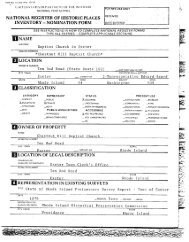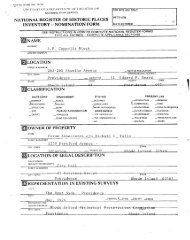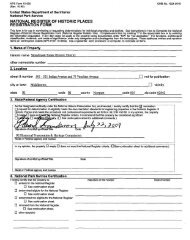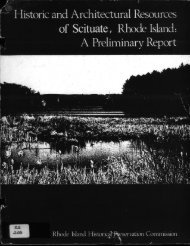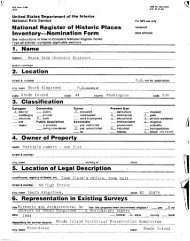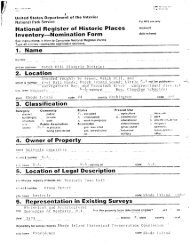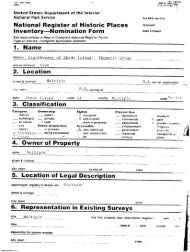1 Dr. Jonathan Prude, Emory University “The Great Transformation ...
1 Dr. Jonathan Prude, Emory University “The Great Transformation ...
1 Dr. Jonathan Prude, Emory University “The Great Transformation ...
You also want an ePaper? Increase the reach of your titles
YUMPU automatically turns print PDFs into web optimized ePapers that Google loves.
2And it’s a lesson preservationists surely help teach--for teaching that lesson is surely also part ofhow preservation works.Thus my opening confession. I will, as I say, return later to some thoughts on connectionsbetween historians and preservationists. But let me turn now to what I suspect Mr. Sandersonhoped I’d provide when he issued his invitation: not the story of personal epiphanies but anhistorian’s perspective on early industrialization in New England--and more specifically onindustrialization in southern New England, in communities like West Warwick and others spreadthrough the Pawtuxet Valley and beyond, from the late 18th century to roughly 1850.First, some background considerations. I’m using the term “industrialization” rather than“Industrial Revolution” to stress that what happened was not some one-off event but an evolvingprocess. And I’m further underscoring the breadth of what happened by calling it <strong>“The</strong> <strong>Great</strong><strong>Transformation</strong>,” a rubric I’m invoking to signal industrialization’s extensive cultural, politicaland economic ramifications.Still, for all its reach, industrialization was not everything. For my purposes, the marrowof “industrialization,” the core phenomenon as distinct from its multiple consequences, involveda shift in manufacturing, in the making of goods. More specifically, it involved markedlyaccelerating divisions of labor by which the fabrication of products was increasingly choppedinto sub-tasks, often allotted to relatively unskilled workers, with the result that more could beproduced more cheaply. Responding in some cases to rising consumer demand and in all cases tomounting quests for profits, industrialization reflected and contributed to a stiffening capitalistgrip over America’s political economy. At the same time, industrial manufacture contrasted toartisanal or handicraft production by which individual items were fashioned as a whole, fromstart to finish, by laborers schooled to one or another degree in all the skills of a trade. Of course,the line between handicraft and industrial production was not always neat. But construingindustrialization as pivoting centrally around heightened divisions of labor allows us to recognizea process that gained traction in the United States, especially in the North, between theRevolution and the Civil War.







